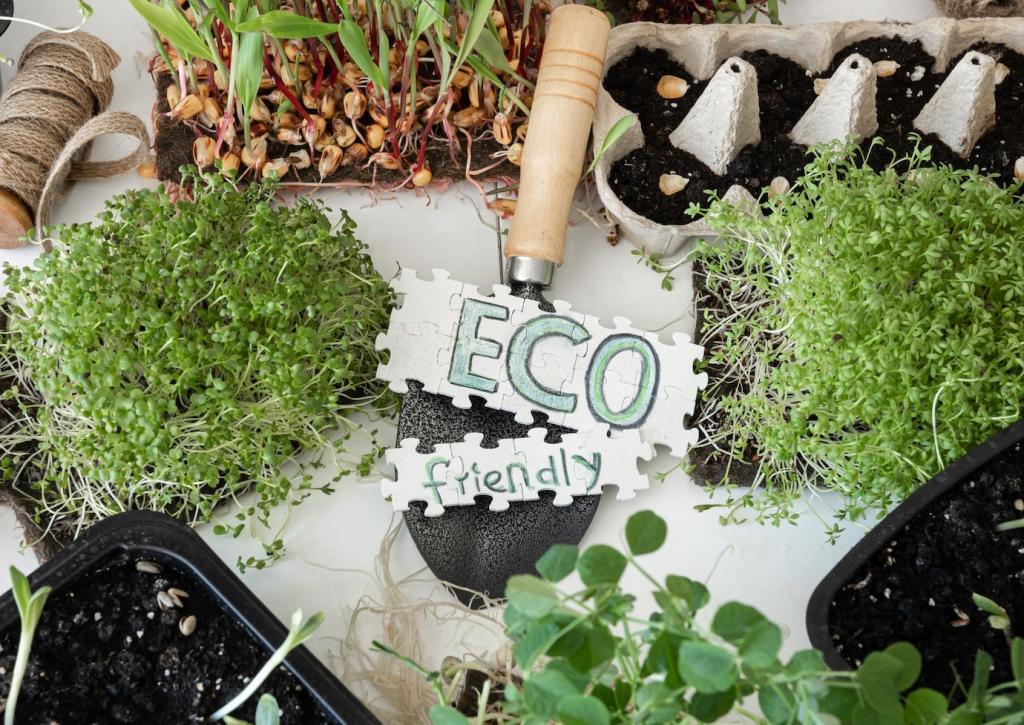Green Marketing: Effective Copy for Eco Homes
Today’s chosen theme: Green Marketing: Effective Copy for Eco Homes. Step into a world where persuasive words power cleaner air, quieter rooms, and kinder bills. We’ll show you how ethical, evidence-based copy turns sustainable features into human benefits that inspire clicks, conversations, and community.
Know Your Eco Home Buyer
Emotional Drivers That Actually Convert
Healthier indoor air, lower stress from steady temperatures, and the quiet pride of shrinking a family’s footprint matter more than abstract metrics. When your copy reflects safety, comfort, and legacy for future generations, eco homes become irresistible, not just responsible. Invite readers to share their biggest motivation below.
Common Barriers and Gentle Reframes
Buyers worry about upfront cost, confusing jargon, and greenwashing. Reframe with clarity: explain total cost of ownership, show real utility outcomes, and use plain language. Replace hype with specifics and transparent caveats. Ask readers which doubts they hear most so we can craft better responses together.
A Day-in-the-Life Persona Snapshot
Meet Maya, a teacher with allergies who loves morning light and hates unpredictable bills. She wants safe air, quiet rooms, and honest numbers. When your copy speaks to Maya’s morning routine and monthly budget, features like heat recovery and insulation become comforting solutions, not technical trivia.
Write Benefit-First Headlines
Transform Specs into Human Outcomes
Instead of touting “R-40 walls,” promise “Whisper-quiet rooms that hold your perfect temperature through heatwaves and cold snaps.” Then link back: “Thanks to continuous insulation and air sealing.” This bridge respects intelligence while keeping emotion front and center. Share a spec you struggle to translate, and we’ll rewrite it.
Specificity Beats Superlatives Every Time
Replace vague claims with anchored numbers, sources, and context. “Cut winter heating costs up to 32% in climate zone 4” feels real. Footnote assumptions and date your data. Precision builds trust, reduces skepticism, and invites deeper reading. Drop a feature below, and we’ll craft a quantifiable claim together.
Proven Headline Patterns for Eco Homes
Try clarity-first patterns: “Breathe Easier Tonight: Whole-Home Filtration That Keeps Allergens Outside.” Or time-based benefits: “Sleep Through Storms: Backup Power That Just Works.” Or local context: “Beat Coastal Humidity Without the Noise.” Test two at a time and invite readers to vote; you’ll learn fast and ethically.

Micro-Stories That Spark Recognition
“On the first windy night, Lena noticed the silence. No drafts under the door, no rattling vents—just the dog snoring.” In a few lines, we feel comfort and care. Invite readers to share a small comfort they treasure at home, and we’ll craft micro-stories that mirror their world.

Place-Based Authenticity
Reference local utility rates, pollen seasons, and building norms. “Designed for Tri-Cities summers, with shading that tames western sun by late afternoon.” These grounded details prove you understand context. Ask readers where they live and which seasonal challenge they want copy to address next.

Ethical Social Proof Through Community
Instead of hype, describe participation: an open-house energy tour, a school workshop on heat pumps, or a neighborhood tree-planting day. Community actions demonstrate values without performative claims. Encourage readers to sign up for our next green home walk-through and share topics they want covered.
Total Cost of Ownership, Simply Explained
Show how better envelopes reduce equipment size, maintenance, and noise over time. “Spend less on repair, more on weekends away.” Visualize a five-year curve comparing monthly energy expenses. Invite readers to download a transparent calculator and tell us which scenarios they want preloaded.
Before-and-After Bill Narratives
Narrate a bill change without exaggeration: “January: $218 to $146 after sealing and heat pump installation, with identical thermostat settings.” Include weather normalization to stay honest. This gentle clarity reassures careful readers. Ask subscribers to share a bill question, and we’ll answer with plain-language guidance.
Incentives Without the Fine-Print Trap
Summarize rebates and tax credits with eligibility notes and links to official resources. Use disclaimers that respect readers. “Programs change; we’ll notify subscribers of updates quarterly.” Offer a simple checklist to discuss with their advisor. Encourage readers to subscribe for policy updates relevant to their ZIP code.
Use Visual Language in Your Copy
Sensory Anchors That Feel Like Home
Describe sensations: “Mornings without cold tiles,” “hallways without echoes,” “evening air that smells like rain, not damp drywall.” These cues are universal and kind. Invite readers to comment with a favorite home feeling, and we’ll weave it into next week’s examples.
Caption Craft That Converts Gently
Photo captions are tiny billboards. “Sun shades cut glare on homework desks while letting winter warmth in.” Short, specific, friendly. Add a link to a deeper explainer beneath. Ask followers which caption tone they prefer: playful, poetic, or pragmatic—we’ll iterate with their votes.
Accessibility Signals Respect
Plain language, descriptive alt text, and high-contrast palettes help everyone. “This diagram shows airflow moving quietly through a filtered core.” When copy includes people of varied ages and abilities, readers feel seen. Share accessibility suggestions and we’ll incorporate them across our eco home templates.
Offer something genuinely useful: “5-Step Energy Comfort Checklist,” “Quiet Home Starter Guide,” or “Local Rebates Map.” Promise privacy, deliver clarity, and include a friendly unsubscribe note. Ask readers which guide they want next, and we will build it with their top questions.
Craft Respectful Calls to Action
Encourage small steps: “Book a 15-minute fit call,” “Tour an eco kitchen virtually,” or “Borrow an energy monitor.” Small commitments reduce anxiety and increase learning. Invite subscribers to propose a low-effort experiment, and we’ll feature it with simple instructions.
Craft Respectful Calls to Action
Search-Friendly Without Greenwashing
01
Categorize queries: “comfort problem,” “health concern,” “bill anxiety,” “resilience curiosity.” Write pages that answer each with specifics, then invite next steps. Ask readers to share the question that led them here, and we will create a page that answers it completely.
02
Target helpful specifics like “heat pump noise at night,” “basement damp smell fix,” or “best insulation for windy ridge.” Bundle answers into guides with diagrams and plain talk. Request comments on which cluster deserves a deeper dive next week.
03
Use structured data for FAQs and how-tos, cite sources, and date updates. Readers appreciate freshness and verifiable claims. Invite subscribers to flag outdated data so we can revise swiftly and keep every eco home promise accurate, timely, and clear.
Tone and Ethics for Lasting Credibility
Clarity Over Hype
Avoid absolutes like “zero” and “guaranteed” unless verified. Use ranges, conditions, and citations. Explain trade-offs, such as up-front cost versus comfort stability. Invite readers to challenge a claim they see online, and we’ll rewrite it ethically together, preserving impact without exaggeration.
Inclusive, Guilt-Free Messaging
Celebrate progress, not perfection. Offer options at different budgets and living situations. “Start with sealing one room.” Respect renters, multi-generational homes, and small spaces. Ask readers how they prefer to be addressed, so our copy welcomes every neighbor interested in eco homes.
A Simple Pre-Publish Checklist
Before posting, ask: Is this true, specific, helpful, and kind? Are numbers sourced and dated? Does the language respect diverse readers? Share this checklist with your team and subscribe for a printable version you can pin near your desk for every eco home draft.
